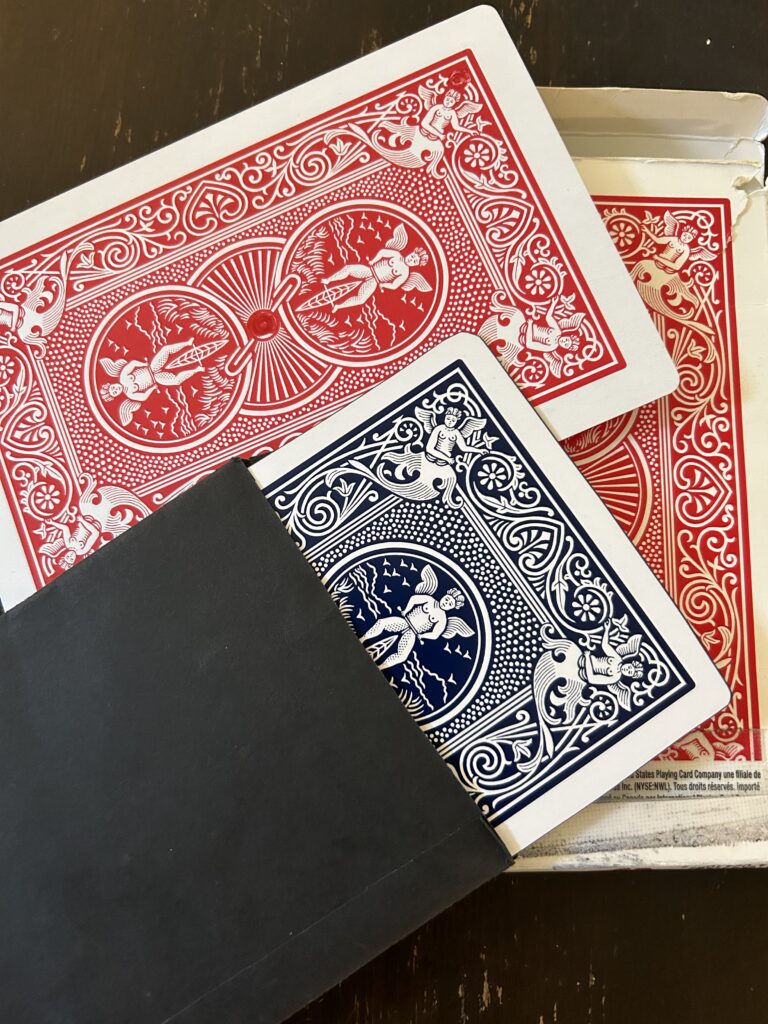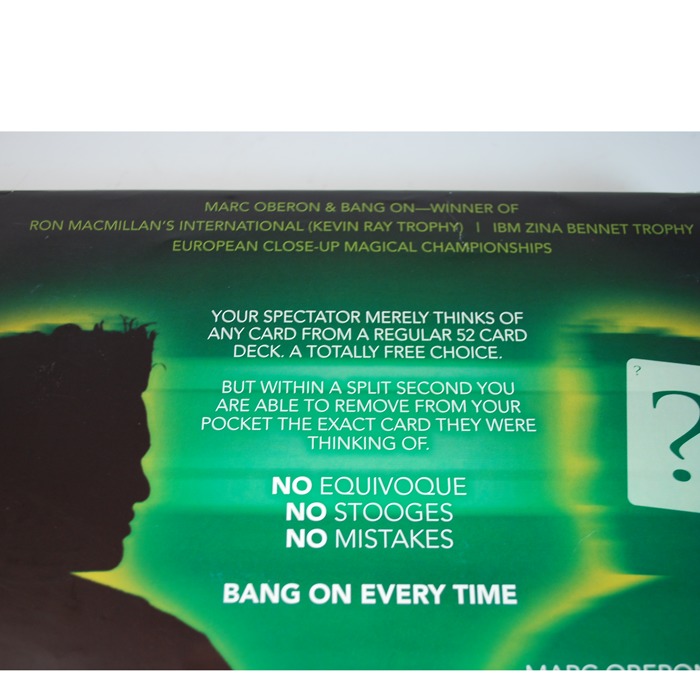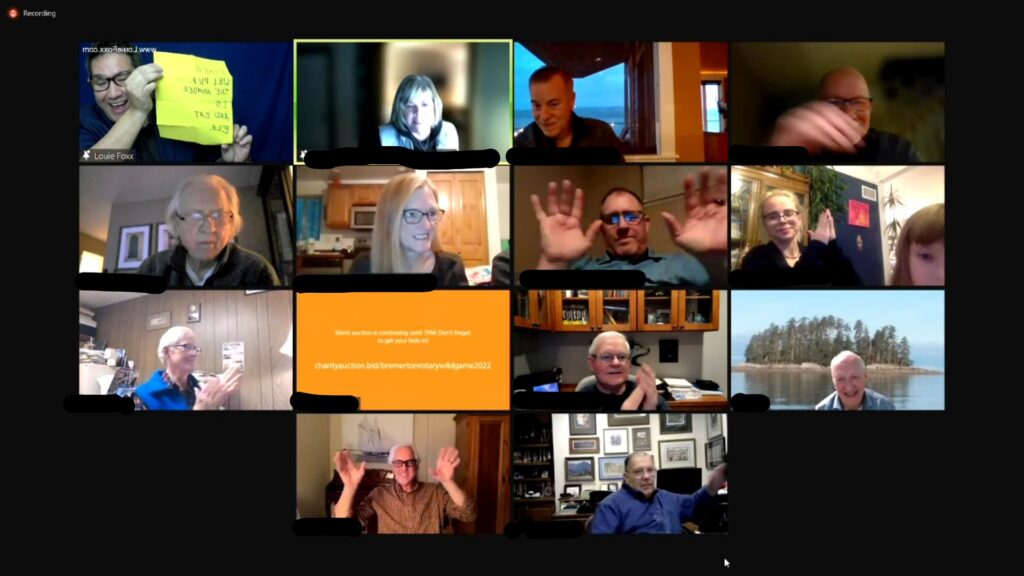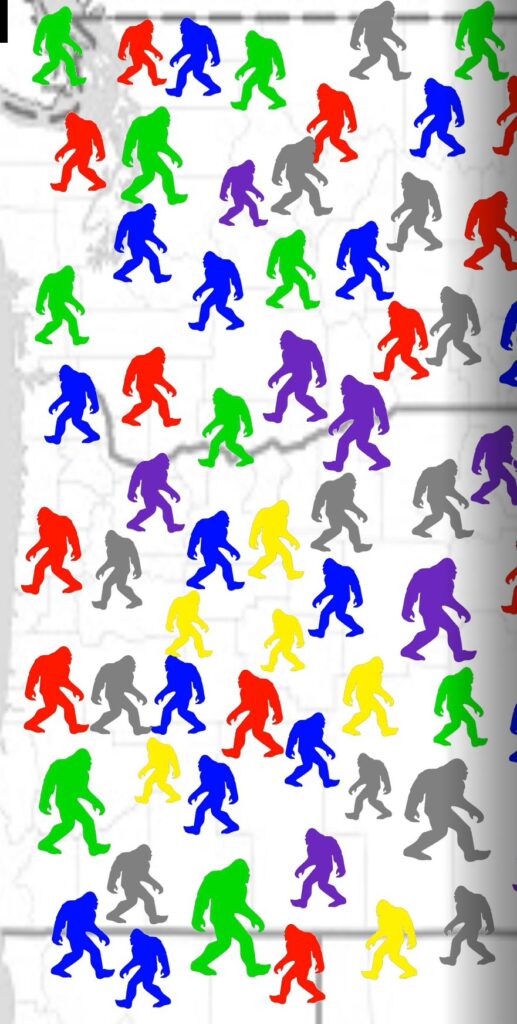I do a routine that I call my “choices” routine. This started as an invisible deck sort of routine, and methodwise moved to the Al Koran Five Star Miracle. Essentially the effect is a card is picked and it matches a prediction in an envelope.
Previously I used a red jumbo deck and a red card in the prediction envelope. Recently as I was getting to the reveal of the prediction and said, “…if this card is the same as yours…” and someone from the audience said, “it won’t there’s only one five of diamonds in the deck“.
They were right, I wasn’t selling that the prediction was from another deck. However, I think it’s wasted energy to tell that’s it’s from anther deck. To save time explaining, I found some blue backed jumbo cards and I’m not using a different colored deck for the prediction card.

This slight change isn’t a very big change. Probably only one person in fifty shows would have the same thought that the prediction couldn’t be the same as the selected card. However of 1 in 50 mentions it, probably 1 in 20 thinks it. By changing the back color, that makes the effect a little bit more clear, with virtually no extra work on my end during the show.
The takeaway from this is listen to your audience!
-Louie




